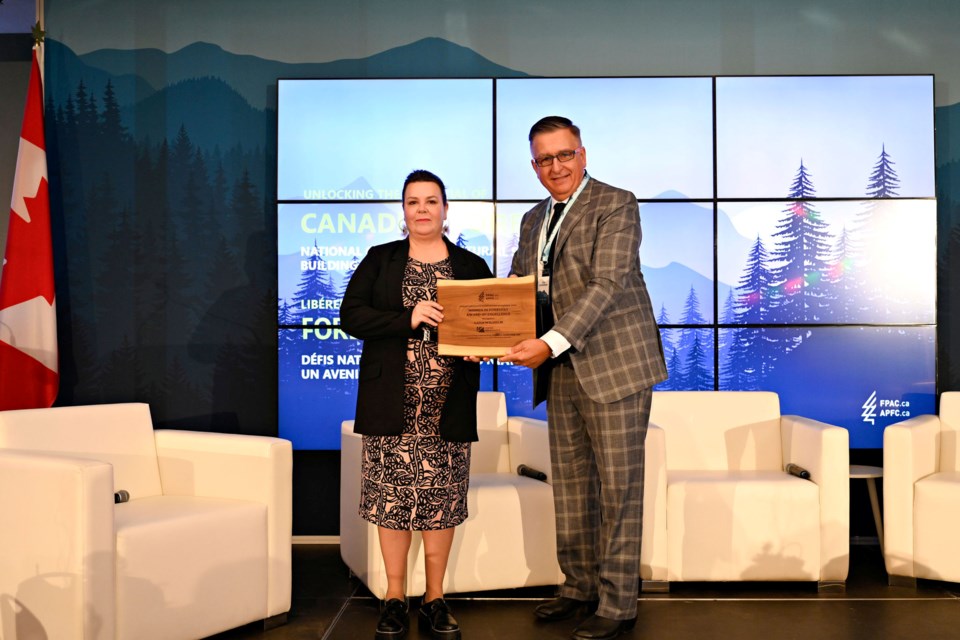
TRAVERSE CITY — Many northern Michigan employers live daily with the struggle of finding competent workers to staff their businesses. The ongoing labor shortage is being felt by businesses across the region, the state and the country. The U.
S. Chamber of Commerce estimates that there are about 8.2 million job openings in the country, but only about 7.

2 million unemployed workers, a trend that’s developed since the COVID-19 pandemic that the national chamber describes as “The Great Reshuffle.” The labor crunch has both business and economic leaders looking for new ways to fill their talent pools, with a growing number of businesses turning to foreign students to help bridge the gap. More than 70 local business people attended an Economic Strategy Session presented last week by Traverse Connect at Northwestern Michigan College’s Hagerty Center on how they can link up with tens of thousands of foreign students studying in Michigan to help meet their employment needs.
“International students are a solution, an option, an opportunity for all the businesses here and throughout the state of Michigan to help fill those talent gaps,” said Dennis Beste of Global Detroit, who moderated the panel discussion that include representatives of Cherry Republic, TentCraft and Petoskey-based immigration attorney Rebecca Mancini of Clark Hill Law. Beste said that current labor projections for the state forecast more than 500,000 available job openings over the next decade. While the state’s job creation levels are flat, he said, other factors are thinning Michigan’s labor force including an aging labor force where a growing number of baby boomers are entering retirement age.
The state’s death rate is also higher than its birth rate, and a large number of Michigan’s college students are departing the state upon graduation. Beste said that 60 percent of graduates from the University of Michigan leave the state to pursue their professional careers. “A lot of them don’t return,” he said.
Munson Healthcare is among Northern Michigan’s major employers that’s constantly on the lookout for new employees. Shelly Spencer, Munson’s chief human resources officer, said Munson has hired close to 1,000 new workers in the past year, but still has hundreds of positions that remain open. Munson also announced plans this summer to hire up to 200 nurses from the Philippines over the next three years through the Southeast Asian Placement Center, Inc.
, to help with the system’s acute nursing shortage. “We’ve brought in a lot of people — but we’ve got a long way to go,” Spencer said. There are currently an estimated 34,000 international students studying in Michigan, Beste said, and more than 1 million nationwide.
Only about 40 percent of international students who earn degrees in the U.S. find employment here, he said, leaving hundreds of thousands who either have to find jobs or return to their home countries.
“This is an untapped pool of talent,” he said. “As an employer, you’re supplying a job opportunity to a population of students who really need that ..
. think about that, and the motivation that it instills in them.” Foreign students are also studying in many of the highest-demand fields in the workforce, he said.
According to national college enrollment data from 2019, more than 80 percent of graduate students studying petroleum engineering are international students. Foreign graduate students make up 72 percent of those in computer and information sciences, and 54 percent studying chemical engineering. About 60 percent of international students are enrolled in high-demand STEM (science, technology, engineering and math) education fields.
Some of the country’s largest businesses that tap the foreign student talent include Apple, Amazon, Capital One and Microsoft. Leading Michigan companies that employ foreign students include General Motors and Ford, Gordon Food Services and Grand Valley State University. Beste said businesses can employ foreign students through programs including Curricular Practical Training (CPT) and Optional Practical Training (OPT) programs – similar to traditional student internships that can be paid or unpaid.
Those relationships can be extended through long-term programs including H1-B and EB-2 visa programs, O-1 visas, or through Green Cards that provide for permanent U.S. residency for qualified applicants.
Rob Hanel, who runs human resource operations for TentCraft, said his company initially passed on pursuing foreign students as “too complicated” before it decided to hire a foreign engineering student as an intern several years ago. “Until we actually went down that route did we realize what a value-add this was for the organization and for this individual,” Hanel said, adding that the company has also hired a refugee from Afghanistan who gained asylum in the U.S.
“We can’t say you’ve tried everything to fill these positions if we haven’t tried everything...
that’s what finally got us to try it.” Madison Partak, recruitment coordinator for Cherry Republic, said its foray into international talent pool was spurred by two ongoing staffing gaps at its fulfillment center in Leelanau County. “We got to a point going into one of our busy holiday seasons where we were like ‘we really need to fill this’ and so we started being more creative,” she said.
“That was our nudge to get us to start looking at international students.” Partak said the company found two students looking for a several-month CPT experience, and both stayed for a year and one has been with the company for two years. “It was fantastic,” she said.
“The experience and talent they brought to the company was just unmatched...
they were incredibly driven.” Presenters acknowledged that there are costs associated with pursuing foreign students — and additional time and legal expense for arranging long-term commitments for those workers. But Beste said universities will often help with the paperwork and logistics with helping employing their foreign students, along with organizations like Global Detroit that launched in 2010 to help immigrants assimilate into Michigan and its workforce.
The state Department of Labor and Economic Opportunity and local agencies like Networks Northwest can also help in securing foreign labor talent. Hanel said despite the time and expense involved, the costs are largely similar to standard employe recruitment and development costs that businesses routinely encounter. “You’re not spending any more money than you would bringing someone out of college into that position who’s not an international student,” Hanel said.
“You can manage your spend, just like you would for any other employee.” Panelists also said that businesses that go through the legal and administrative process have an easier time once they gained experience on how to access the foreign workforce. “Once you do have somebody helping you strategize what your needs are as an employer, then it can be easy — you have the person to go already,” said Mancini, whose law firm typically works with a company’s human resources and/or legal departments to navigate the administrative work needed to secure foreign hires.
Both Hanel and Partak said their foreign hires have been positive additions to their company’s staffs and encouraged other business people to explore growing their workforce through the international talent pool. “What you get in loyalty and reliability from these international students – it’s unmatched,” Hanel said..














